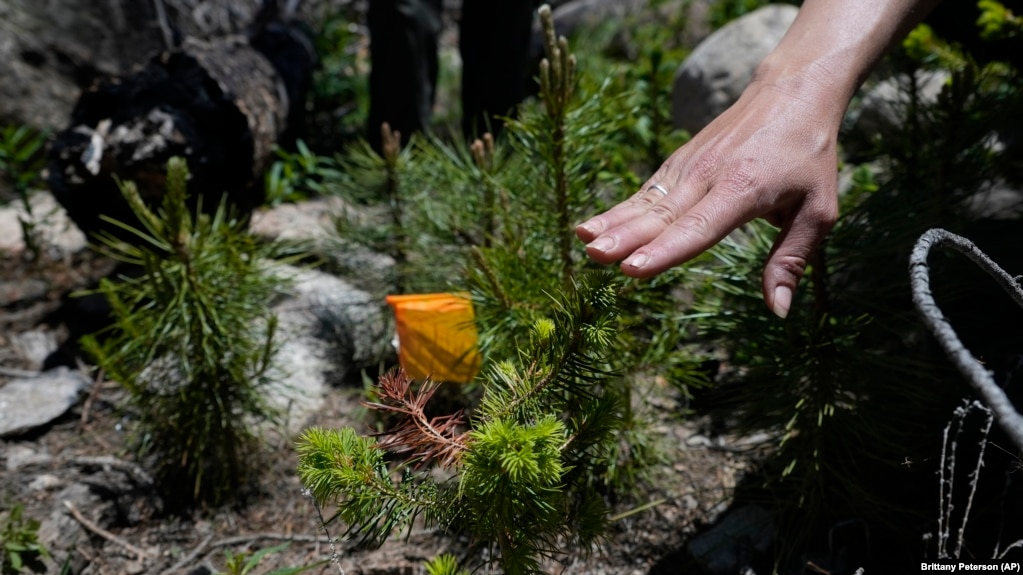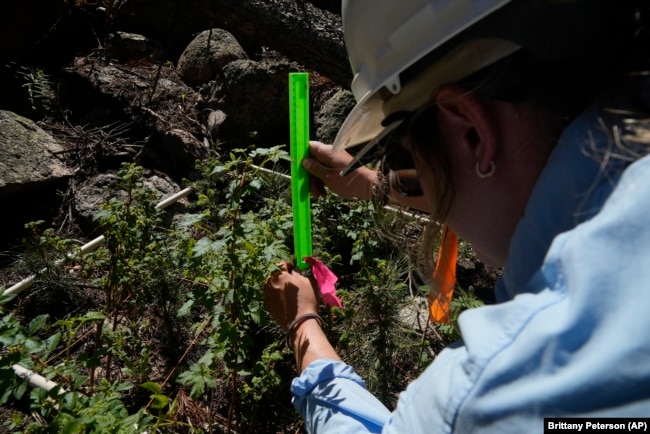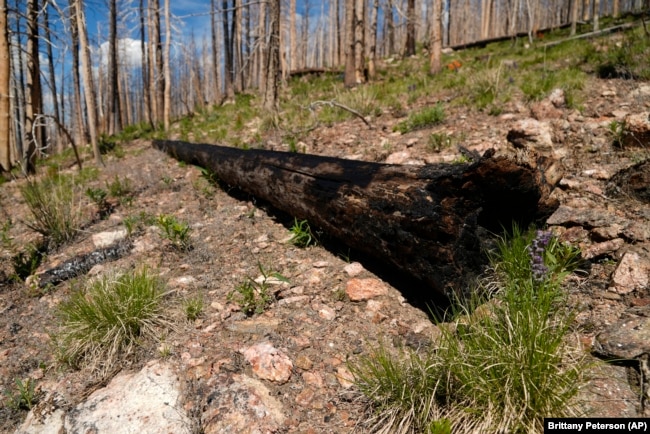AUDIO
Study: Replanting Same Trees Cannot Replace Burned Forests

Camille Stevens-Rumann recently sat on the ground and measured small trees to see how much they had grown in seven months.
She found they had grown five to 10 centimeters. Her team had planted several different kinds of trees, known as evergreens, two years ago in an area of the Rocky Mountains in Colorado, which had burned in a fire in 2020.
Stevens-Rumann and other researchers want to learn the relationship between tree growth and elevation.

Researchers say there are not enough small trees or seeds from living trees to replace burned trees. Even if there were enough, they say the U.S. does not have the workers to plant and care for them.
The Forest Service said the biggest delays they meet while replanting on public land are preparing environmental and cultural studies and preparing burned areas, so they are safe to plant. That can take years.
Stevens-Rumann said, "We're in a place of such drastic climate change that we are not talking about whether or not some of these places will be a different kind of forest, but whether or not they will be forests at all."
Hotter fires
In the past, the U.S. was able to replant burned forests. But the researchers say larger, more intense fires are destroying trees that normally provide seeds. They say the fires leave burn scars so large trees cannot naturally regrow.
Solomon Z. Dobrowski is a University of Montana forest management expert. He said more areas in the West need replanting after fires than can be replanted. He said at least 1.5 million hectares need to be replanted but officials are unable to do so. He said that number could triple by 2050.

Targeted tree planting
Matthew Hurteau is a forest ecologist at the University of New Mexico. He studied the way scarred forests had been replanted after a fire in 2011 at Los Conchas. That fire destroyed huge areas of ponderosa pine trees. Hurteau found most of the seedlings, or very young trees, had died from earlier replanting.
As a result, he planted seedlings of different species at several elevations and on hillsides facing different directions. Now he is watching carefully for changes in the soil and water.
Researchers say seedling survival is less likely at lower elevations. It is hotter, drier and more open there. Replanting the same trees in the same areas is likely to fail.
Jason Sieg is acting supervisor of the Arapaho and Roosevelt National Forests & Pawnee National Grassland. He said the Forest Service rules require planting the same species at the same elevations as before a fire. But, he said, it is clear the agency will "need to be flexible moving forward."
For now, that might mean replanting at different elevations or collecting seeds from another place. Over time, researchers say it could require planting trees that are not native to the area. The idea has been debated but is gaining support.
"I've seen people go from saying, 'Absolutely, we cannot move trees around' to, 'Well, let's maybe let's try it at least, and do a few experiments to see if this will work,'" said Stevens-Rumann.
Environmental groups are working on private land burned by the Cameron Peak fire. They are replanting ponderosa pines 150 meters higher than where they used to grow, said Megan Maiolo-Heath. Maiolo-Heath is a spokesperson for the Coalition for the Poudre River Watershed.
So far, 84 percent of trees planted there last year are still alive.
Problems with replanting
The Forest Service is modernizing how it grows young trees. It is also studying ways to grow more or work with private industry, states and groups like the New Mexico Reforestation Center.
Experts say trees might never return to some areas. But it is important that the U.S. does as much as possible in a thoughtful way.
"Trees live for hundreds of years so we need to be thinking about what's right as we plant trees today," Hurteau said.
______________________________________________
Words in This Story
various – adj. used to refer to several different or many different things or people
elevation – n. the height of a place in relation to the level of the sea
drastic – adj. extreme in effect or action; severe or serious
triple – v. to become three times as great or as many
species – n. a group of animals or plants that are similar and can produce young animals or plants
scar – n. a mark on something showing where it has been damaged
flexible – adj. able to change or to do different things
https://learningenglish.voanews.com/a/study-replanting-same-trees-cannot-replace-burned-forests-/7806705.html